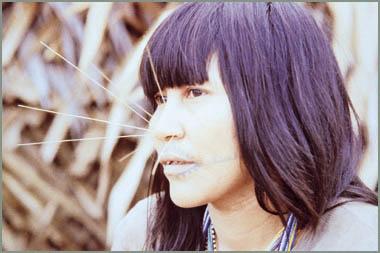Science News
Endangered Amazon Tribes
May 11, 2010

In the Amazon, at least five uncontacted tribes (i.e., have never come into contact with people outside of their tribe) of natives face extinction from development projects that threaten to destroy where they live and hunt. According to a report from Survival, an international-rights group based in the UK, “Governments, companies and others ignore their rights, and invade and destroy their land with impunity.”
"They are the most vulnerable people on our planet," Fiona Watson of Survival said in National Geographic last month. These highly endangered tribes are found in Brazil, Peru and Paraguay.
Survival's Director Stephen Corry (also quoted in National Geographic) finds that “many governments still refuse to take the simple step--properly protecting their territories--that will actually ensure the tribes' survival."
(To see a previous article on the importance of protecting indigenous lands from deforestation, click here.)
Ethnobotanist Mark Plotkin of the Amazon Conservation Team is more specific. “It’s not too much of an exaggeration to say that the most endangered species in the Amazon is the shaman himself.” When a tribal shaman dies, 50,000 years of accumulated medicinal knowledge is lost with them, because their knowledge is only transmitted orally.
But economic development isn’t the only threat to indigenous people. FUNAI, Brazil’s Department of Indian Affairs, stopped contacting the remote tribes directly in 1987 because they realized they were doing more harm than good. They found that 50% of a contacted tribe could be wiped out in the first year by disease. Common diseases that are rarely lethal to westerners can devastate tribes that have no immunity to them. Memory of these disastrous contacts are believed to be a reason these tribes avoid outsiders.